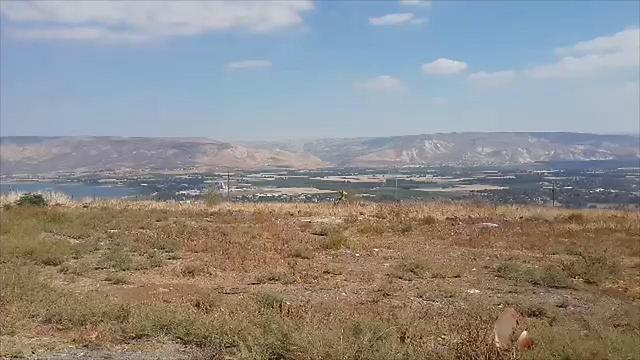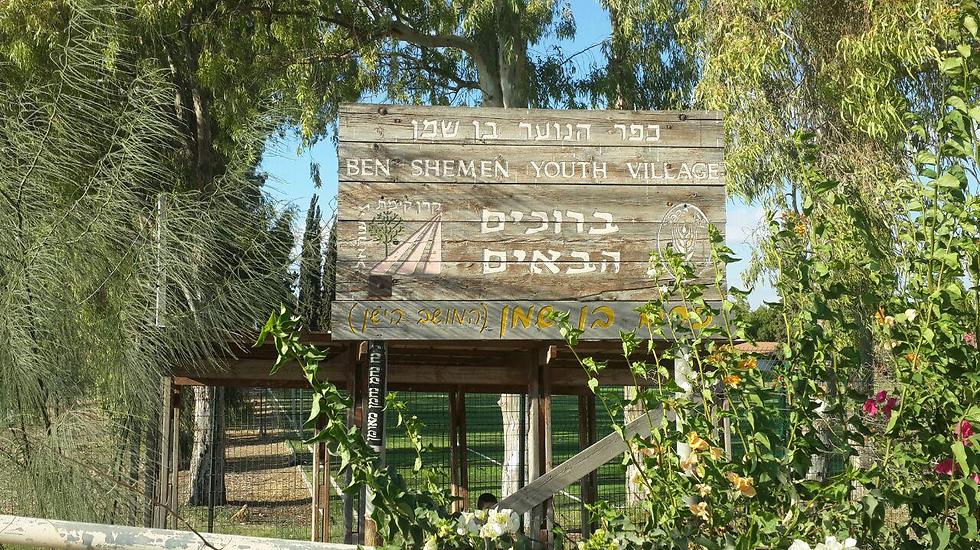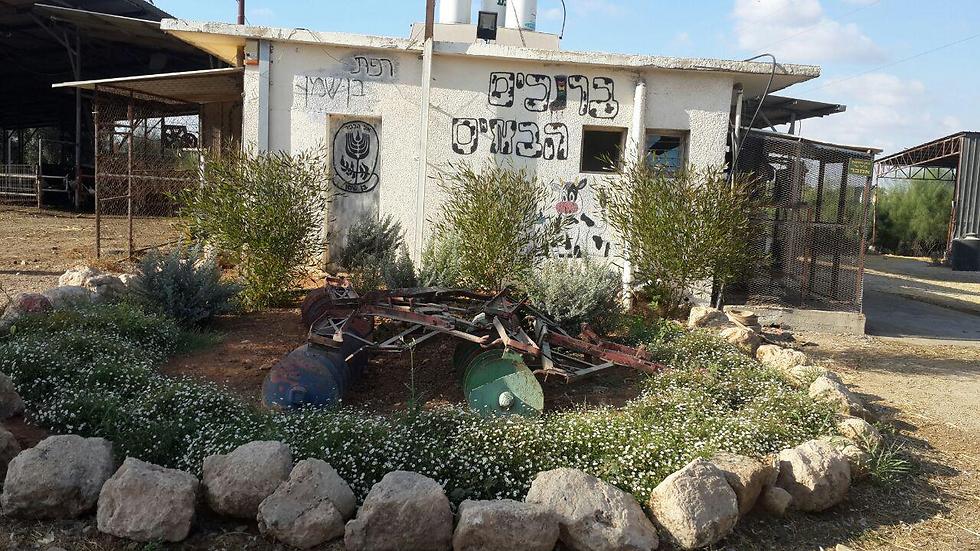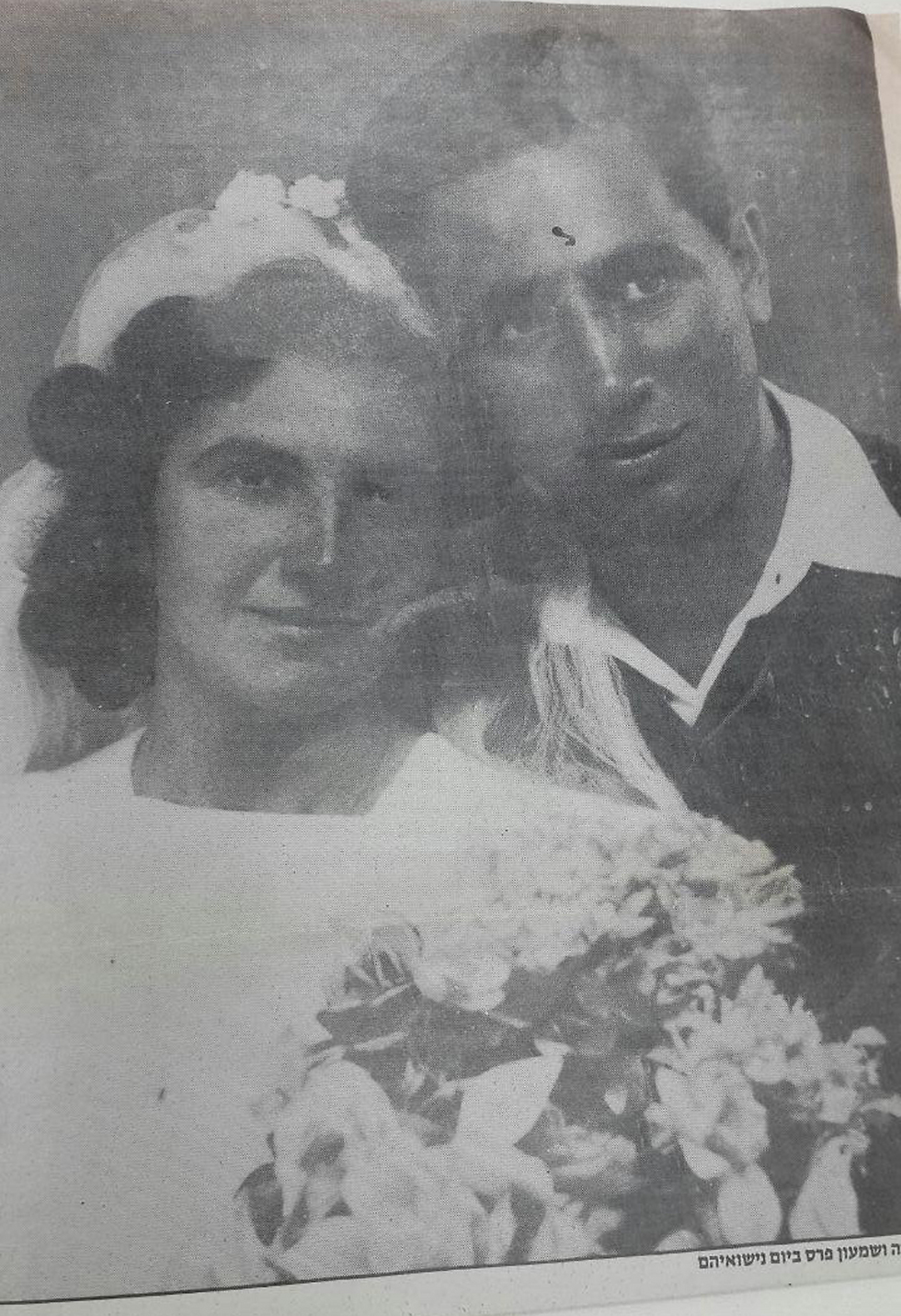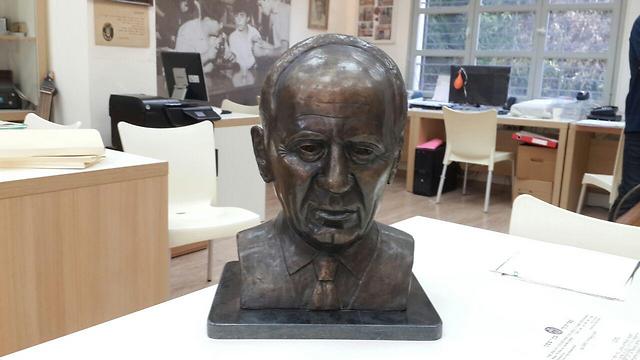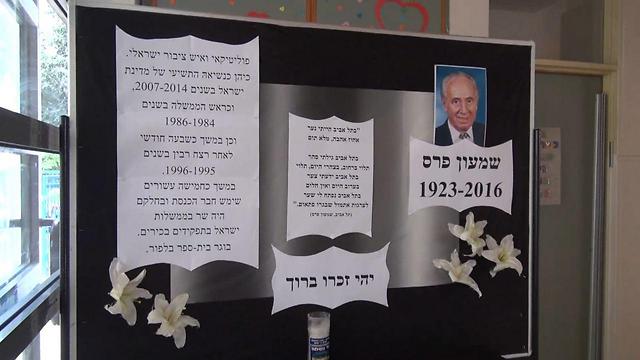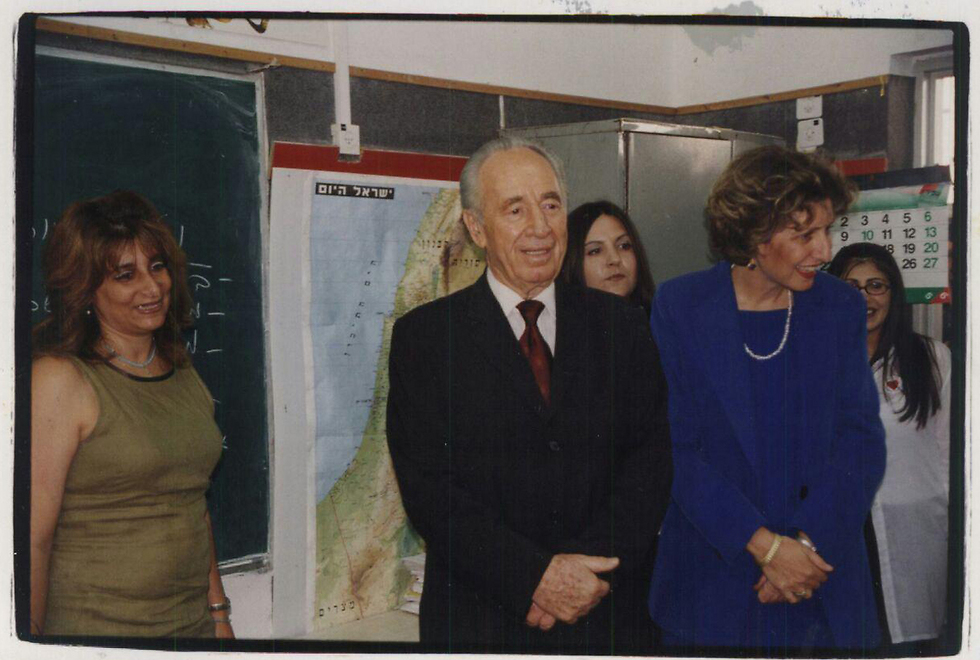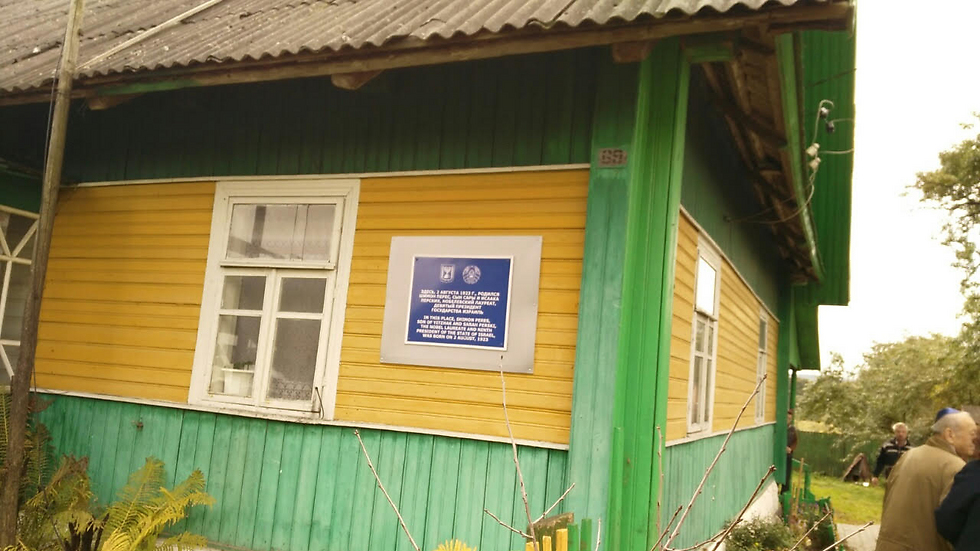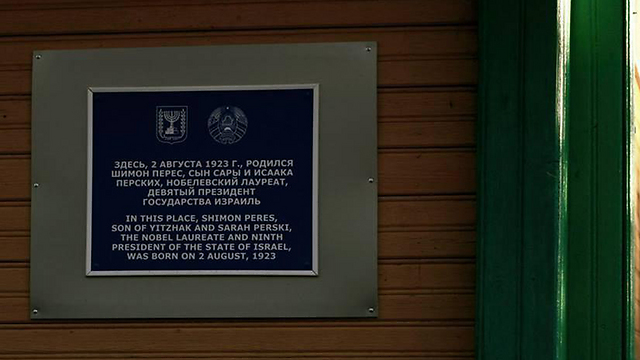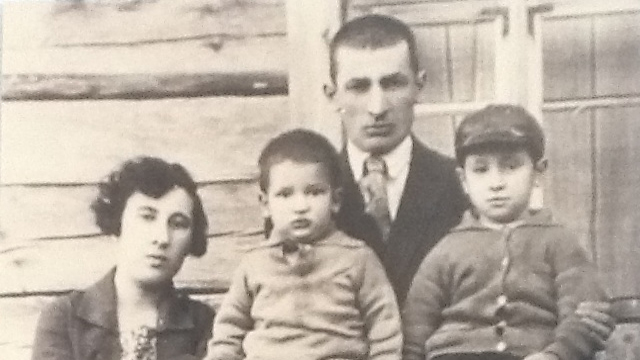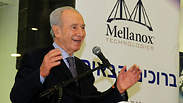
A journey through the stations of Shimon Peres’s life
From his hometown in Belarus, through his elementary school and youth village, to the kibbutz he worked at as a shepherd, the former president receives an emotional farewell from many people who knew him before he occupied Israel’s most prestigious roles.
Peres, who died early Wednesday at the age of 93, arrived at Kibbutz Alumot near the Sea of Galilee upon completing his studies at the Ben Shemen Youth Village and after receiving agricultural training. During that period, Peres underwent such training as part of the professional and ideological preparation for the settlement.

“Peres always had a warm spot in his heart for Alumot. He did whatever he could to help the new kibbutz succeed, and looking around, one can definitely see that it worked,” says Avraham Kalderon of Alumot.
The kibbutz was founded in the late 1930s in the Poria area in northern Israel, where Peres arrived in 1942 after training in Kvutzat Geva. There he worked as a shepherd, a dairy farmer and a treasurer, and spent many days with the sheep and goats in the pasture.
“Alumot was the last kibbutz founded in the Jordan Valley,” says Kalderon. “There were 5,000 empty dunams (1,235 acres) on the slope which served as a pasture. Shimon would take the sheep and goats out in the morning and return them to the pen at the end of the day. In the mid 1940s, Peres assumed public positions in the Hanoar Haoved Vehalomed (Working and Studying Youth) movement, and upon the state’s establishment he left the kibbutz and became involved in security-related activity.
In the mid 1960s the kibbutz was dismantled, and it was reestablished in 1968 by the Hehalutz Lamerhav movement from South America. “He supported the movement and the renewed settlement of Alumot,” says Kalderon. “Throughout the years, he returned to the kibbutz on every family and national event, and even brought along world leaders he met with. On one occasion, he came here with Mikhail Gorbachev, the Soviet Union’s leader and the person who led to its dissolution.
“As far as we’re concerned,” Kalderon concludes, “Peres was, and still is, a significant personality in the kibbutz.”
Where Shimon met Sonya
Peres spent his youth at the Ben Shemen Youth Village. Over the years, he often looked back at that period and said his experiences there had shaped his world. That was also where he met his wife, Sonya Gelman, whose parents were among the village’s founders. The two got married in the village’s internal courtyard, and Sonya’s funeral was held in the same place in 2011.
Dr. Ilana Tishler, the youth village’s director, says Peres arrived in Ben Shemen in 1939. “This is where he received his education, this is where he swore allegiance to the Haganah, and as he said in the past, this is where his roots are.
“This is a very difficult day,” she added. “It’s a great loss. The village’s graduates usually stay in touch. In Peres’ case, he was in touch with the village all these years. He mentioned the village upon receiving the Nobel Peace Prize, he mentioned the cowshed, and he recently donated money for the renovation of a building in Sonya’s memory.”
The village’s archive includes many letters and pictures of Peres from those days, as well as the original invitation to his wedding and new letters and pictures from the visits paid by the former student who wanted to be a shepherd and became a minister, a prime minister, and the State of Israel’s president.
In the village stands a black sculpture of Peres’ head, carved by his classmate Leah Michaelson. In the old cowshed we found Gilad Gabai, a Ben Shemen graduate and the cowshed’s deputy manager. He knows exactly where Peres met Sonya and says it all began in the Ben Shemen dairy.
“It’s very exciting to be here of all places on this day. This is the historical cowshed. According to the legend, this is the exact place where Peres met Sonya and they got to know each other while he fed the cows.”
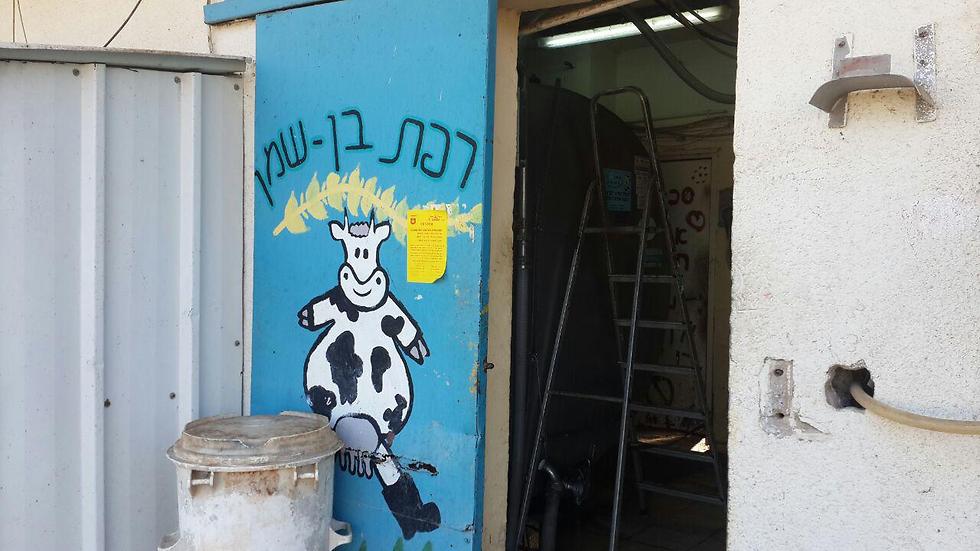
Dan Yadin, a 16-year-old 11th grader in Ben Shemen, met Peres during one of his visits. “I got to know Shimon personally. He has a great name and he evoked a lot of respect, so his death is very difficult for us. The entire village is talking about it. Although he did not have a personal connection with every student, his name is connected to the village and to all the pupils.”
‘I know everything about Peres’
As a child, Peres studied at the Balfour Elementary School in Tel Aviv. The news of the death of the student from the class of 1936 stirred mixed emotions among the students. On the one hand, the former president’s death caused great sadness, but on the other hand, the fact that he graduated from the school more than 80 years ago evoked a sense of pride.
“I know everything about Peres,” said sixth grader Ricki Wertheim. “When I woke up in the morning and heard the news, I had trouble accepting that he’s dead, that he’s gone.”
A memorial stand with a memorial candle was placed in the corridor. Ayelet Wertheim, whose two daughters study in the school, added: “’It’s a very sad day. Peres was an inseparable part of our history. The children know very well who he was, and his name is often mentioned in the school folklore.”
The anthem of the school, which was founded in 1919, includes the following line: “Between sycamore trees, for 90 years now. Israel’s president once studied here.” At the entrance to the school there is sign detailing the educational institution’s glorious history.
In 2000, Peres visited the school and posed for pictures with the teaching staff and the students. First grade teacher Dalia Tsur, who appears in one of the photos, says she remembers every moment of the visit: “Peres asked the students who was Balfour, and they didn’t know. He sat down and explained to them about the man and the famous declaration. Then he asked the children questions and expressed a lot of interest. He had a good time, and we were enchanted by him.”
A final farewell in childhood hometown
Residents of Peres’s hometown of Vishnyeva in Belarus gathered Wednesday outside his childhood home to pay their respects for the biggest international figure to ever emerge from their village. The locals learned about Peres’ passing from Limmud FSU, which has been in constant contact with them since it held 90th birthday celebrations for the former Israeli president in Vishnyeva three years ago.
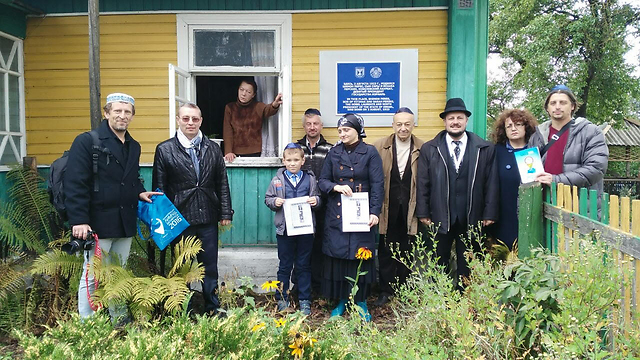
“Shimon Peres brought pride to our village through his life and accomplishments and we felt obliged to pay our respects following his death,” said Oleg Demidchik, 63, of Vishnyeva. “We are humbled that he is from our town and we will never forget this.”
The events for Peres’ 90th birthday celebration, held as part of the Limmud FSU Belarus conference, included the introduction of a permanent photo exhibition showcasing Peres’s life in this remote Belarus village. A plaque was also dedicated to Peres at a house on the site of Peres’s onetime family residence. The plaque reads: “In this place, Shimon Peres, son of Yitzhak and Sarah Perski, the Nobel laureate and ninth president of the State of Israel, was born on August 2, 1923.”
The original idea for the 2013 events in Vishnyeva was first raised to the government of Belarus by Chaim Chesler, founder of Limmud FSU, and Yoram Dori, a close adviser to Peres for many years, during a meeting with officials in Belarus and the local authorities of Vishnyeva four years ago.
“Shimon Peres, a Nobel laureate, is probably the most well-known and prominent individual to ever be born in Vishnyeva, and his memory and legacy honor this town,” said Chaim Chesler. “We are greatly moved to see how deeply the people of Vishnyeva care for Peres and that they joined together in his memory.”










